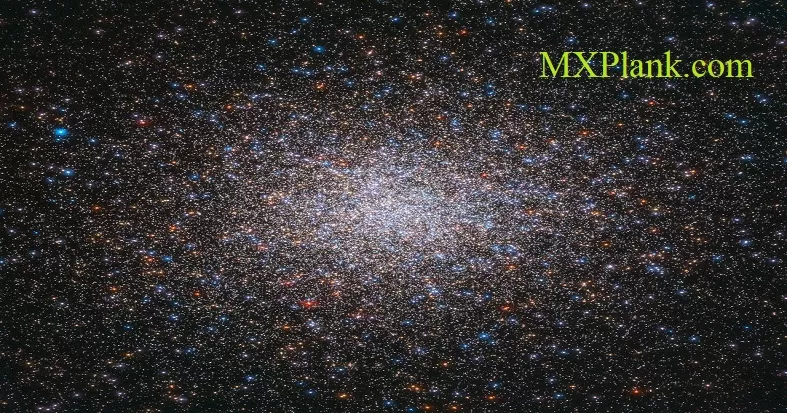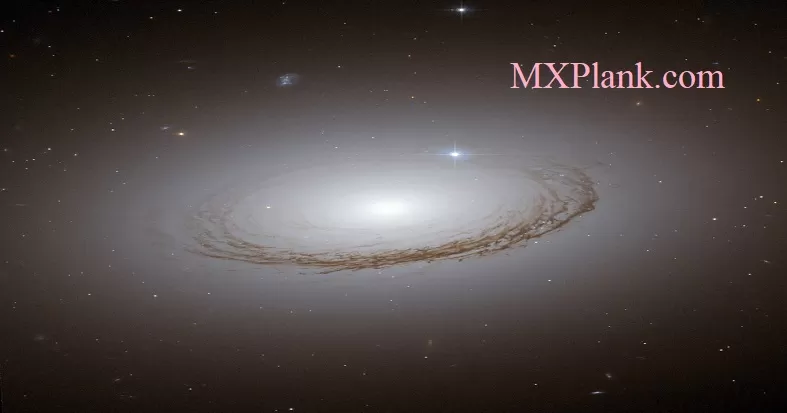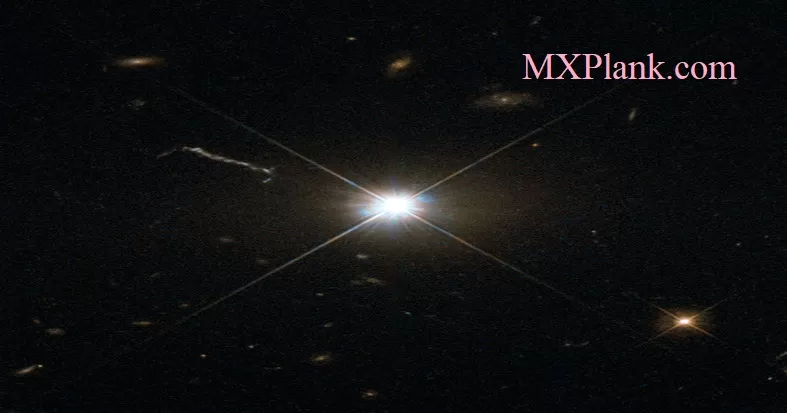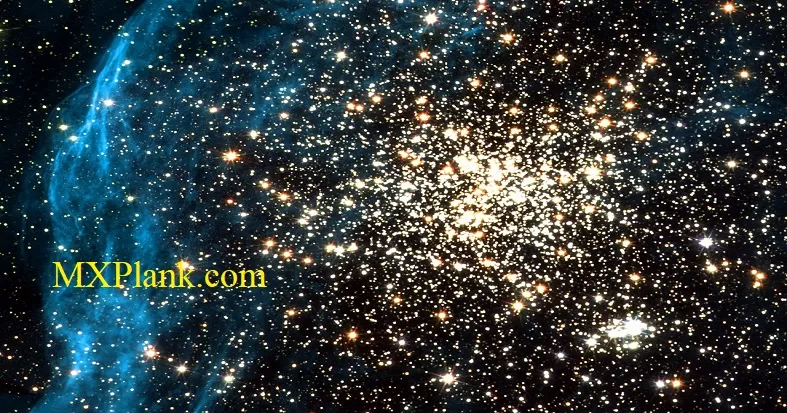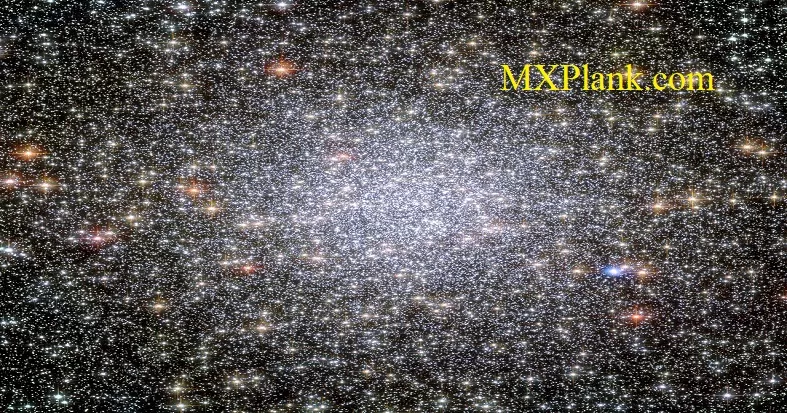PILLARS OF CREATION - MID-INFRA RED IMAGE
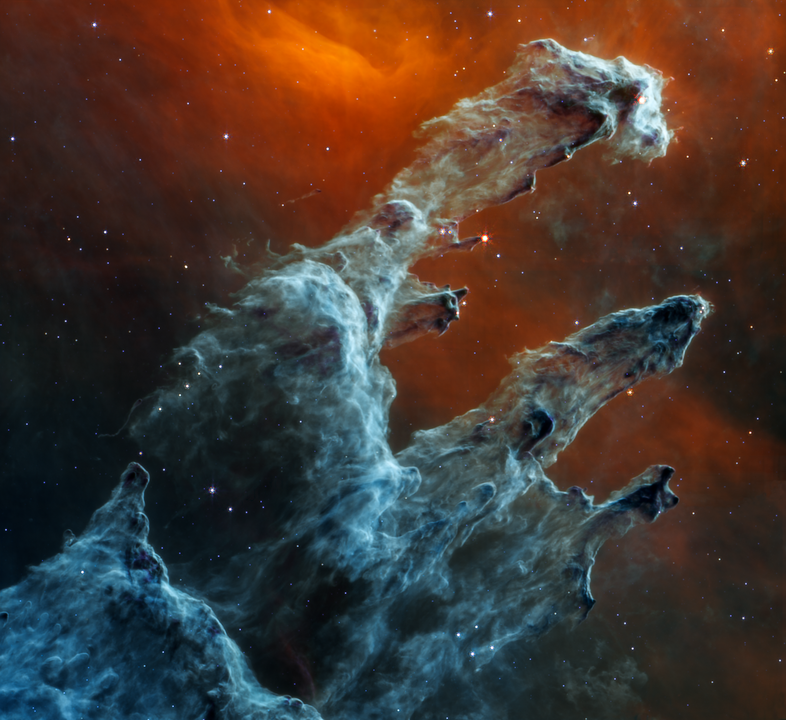
NASA's James Webb Space Telescope's mid-infrared view of the Pillars of Creation strikes a chilling tone. Thousands of stars that exist in this region disappear - and seemingly endless layers of gas and dust become the centerpiece.
The detection of dust by Webb's Mid-Infrared Instrument (MIRI) is extremely important - dust is a major ingredient for star formation. Many stars are actively forming in these dense blue-gray pillars. When knots of gas and dust with sufficient mass form in these regions, they begin to collapse under their own gravitational attraction, slowly heat up - and eventually form new stars.
WOLF-RAYET 140 - MID-INFRA RED IMAGE
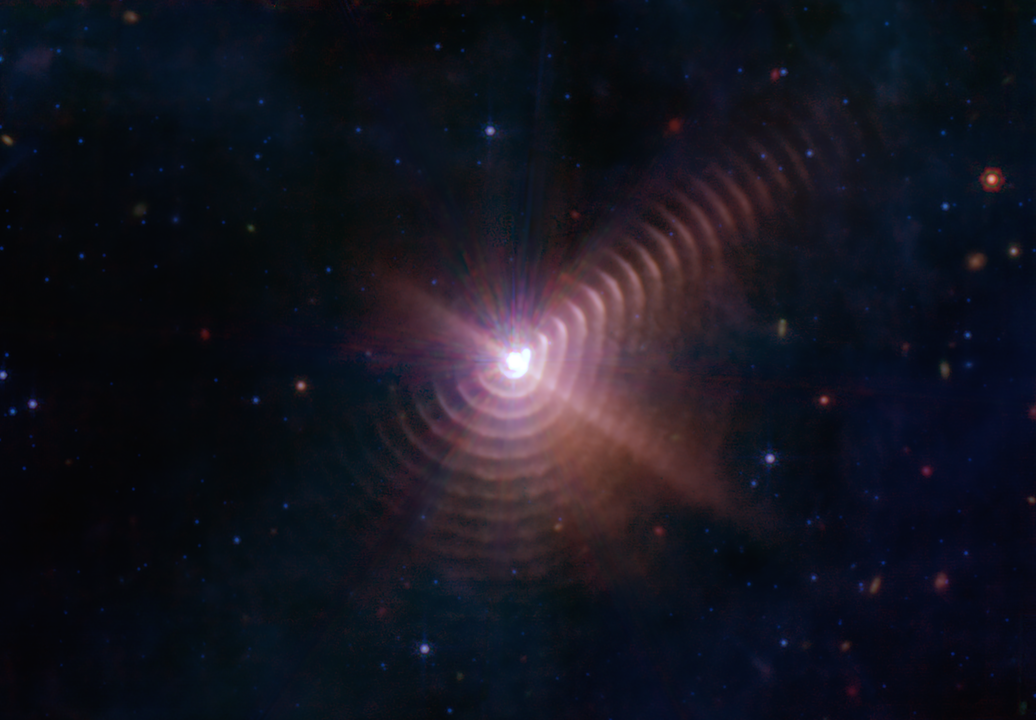
The latest image from NASA's James Webb Space Telescope is a new perspective on the binary star Wolf-Rayet 140, revealing details and structure in a new light. Astronomer Ryan Lau of NSF's NOIRLab, principal investigator of the Webb Early Release Science program that observed the star, shares his thoughts on the observations.
"On the night that my team's Early Release Science observations of the dust-forming massive binary star Wolf-Rayet (WR) 140 were taken, I was puzzled by what I saw in the preview images from the Mid-Infrared Instrument (MIRI). There seemed to be a strange-looking diffraction pattern, and I worried that it was a visual effect created by the stars' extreme brightness. However, as soon as I downloaded the final data I realized that I was not looking at a diffraction pattern, but instead rings of dust surrounding WR 140 - at least 17 of them
DIMORPHOS EJECTA - NIR (NEAR INFRA-RED) IMAGE
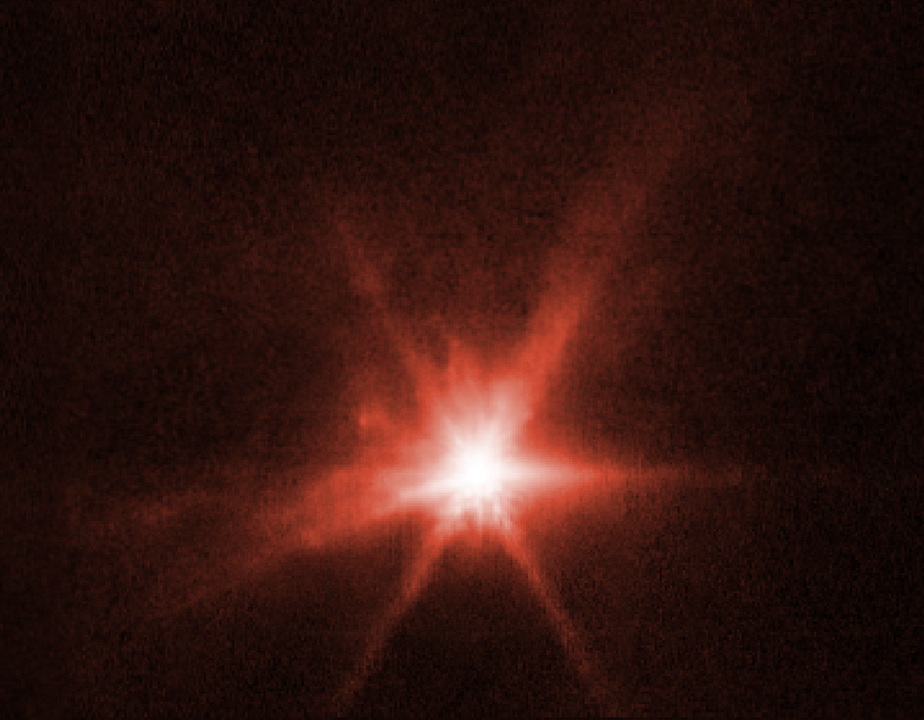
This image from NASA's James Webb Space Telescope's Near-Infrared Camera (NIRCam) instrument shows Dimorphos, the asteroid moonlet in the double-asteroid system of Didymos, about 4 hours after NASA's Double Asteroid Redirection Test (DART) made impact. A tight, compact core and plumes of material appearing as wisps streaming away from the center of where the impact took place, are visible in the image. Those sharp points are Webb's distinctive eight diffraction spikes, an artifact of the telescope's structure.
NEPTUNE - NIR (NEAR INFRA-RED) IMAGE
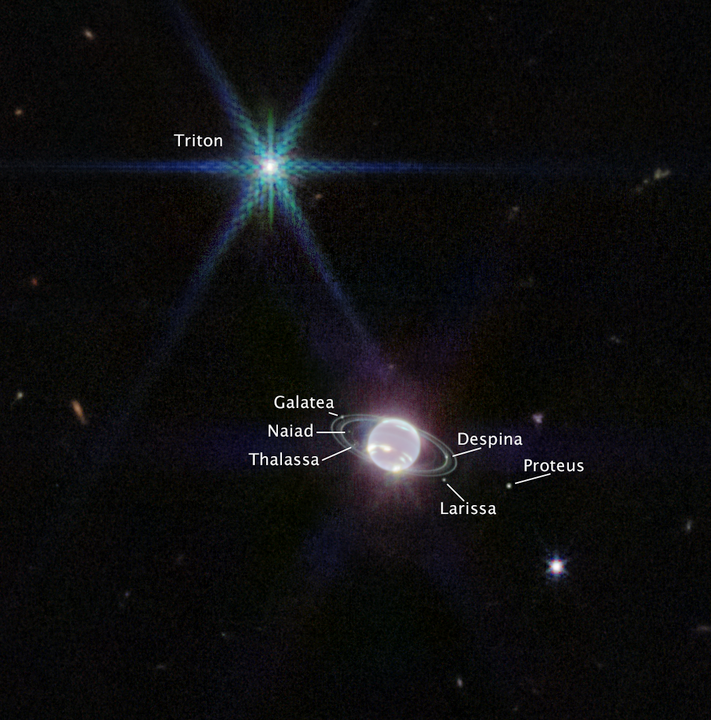
This image of the Neptune system, captured by Webb's Near-Infrared Camera (NIRCam), reveals stunning views of the planet's rings, which have not been seen with this clarity in more than three decades. Webb's new image of Neptune also captures details of the planet's turbulent, windy atmosphere.
Neptune, an ice giant, has an interior that is much richer in elements heavier than hydrogen and helium, like methane, than the gas giants Jupiter and Saturn. Methane appears blue in visible wavelengths but, as evident in Webb's image, that's not the case in the near-infrared.
TARANTULA NEBULA - NIR (Near Infra-Red)IMAGE
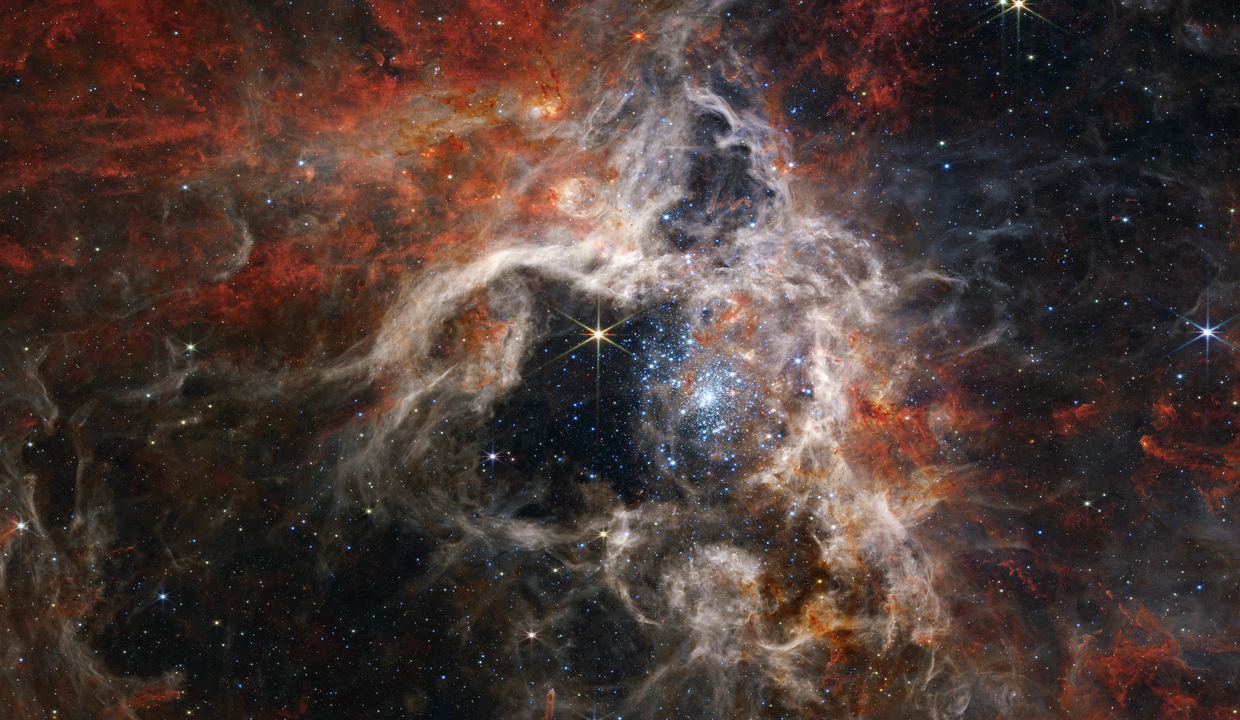
In this mosaic image stretching 340 light-years across, Webb's Near-Infrared Camera (NIRCam) displays the Tarantula Nebula star-forming region in a new light, including tens of thousands of never-before-seen young stars that were previously shrouded in cosmic dust. The most active region appears to sparkle with massive young stars, appearing pale blue. Scattered among them are still-embedded stars, appearing red, yet to emerge from the dusty cocoon of the nebula. NIRCam is able to detect these dust-enshrouded stars thanks to its unprecedented resolution at near-infrared wavelengths.
CARTWHEEL GALAXY - NIR (Near Infra-Red) & MIRI (Mid Infra-Red Instrument)
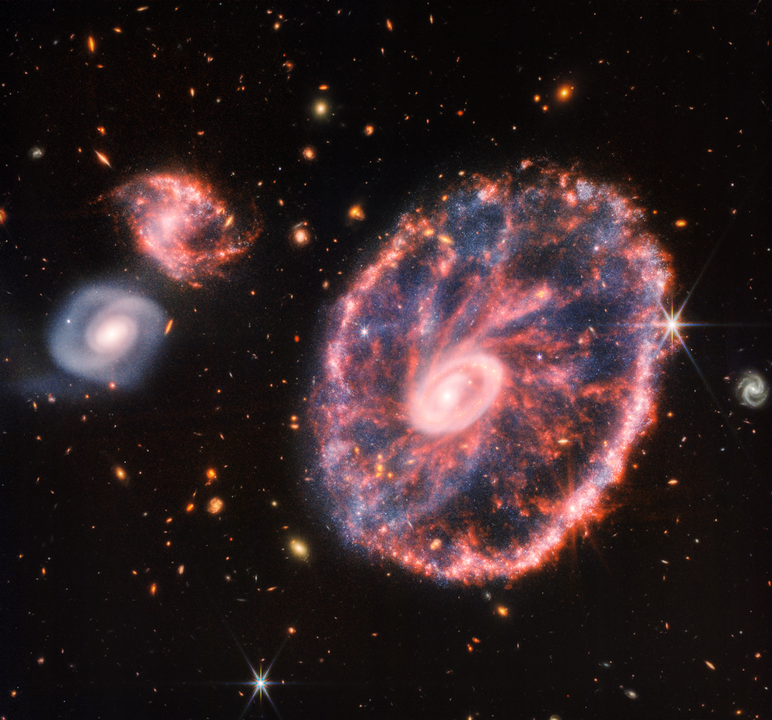
This image of the Cartwheel and its companion galaxies is a composite from Webb's Near-Infrared Camera (NIRCam) and Mid-Infrared Instrument (MIRI), which reveals details that are difficult to see in the individual images alone.
This galaxy formed as the result of a high-speed collision that occurred about 400 million years ago. The Cartwheel is composed of two rings, a bright inner ring and a colorful outer ring. Both rings expand outward from the center of the collision like shockwaves.
"COSMIC CLIFFS" IN THE CARINA NEBULA - NIR (Near Infra-Red) SPECTRUM
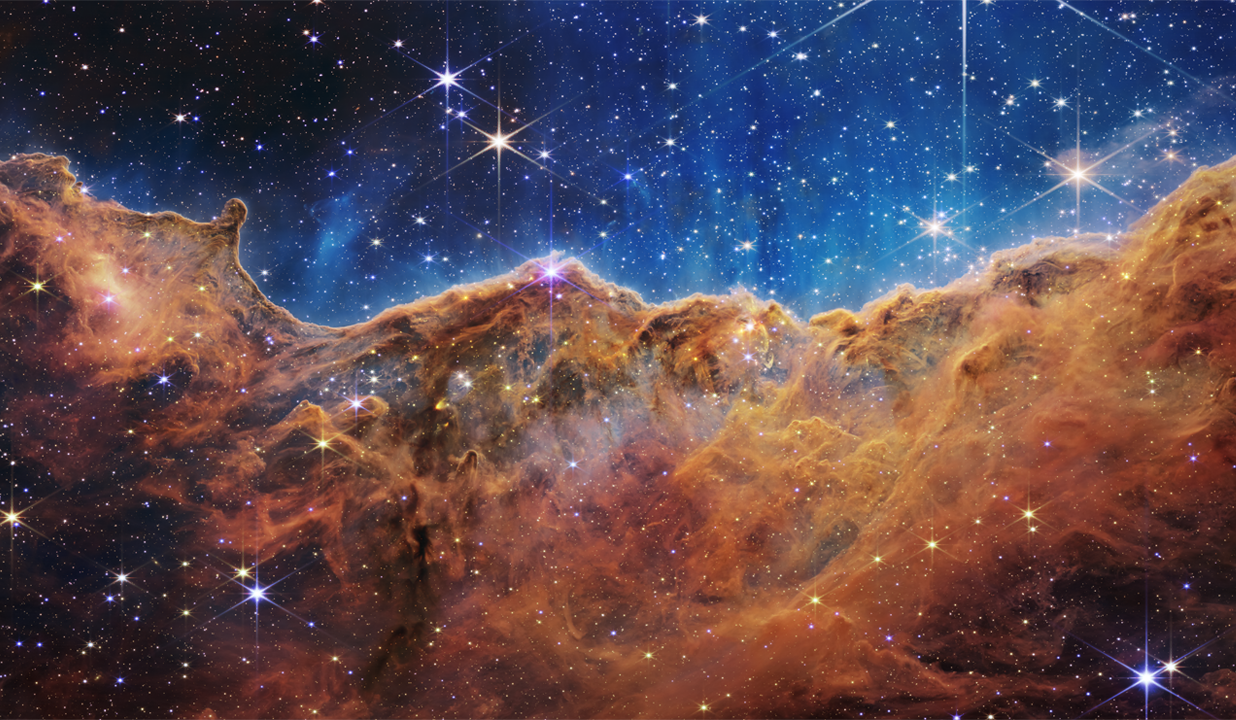
What looks much like craggy mountains on a moonlit evening is actually the edge of a nearby, young, star-forming region NGC 3324 in the Carina Nebula. Captured in infrared light by the Near-Infrared Camera (NIRCam) on NASA's James Webb Space Telescope, this image reveals previously obscured areas of star birth.
Called the Cosmic Cliffs, the region is actually the edge of a gigantic, gaseous cavity within NGC 3324, roughly 7,600 light-years away. The cavernous area has been carved from the nebula by the intense ultraviolet radiation and stellar winds from extremely massive, hot, young stars located in the center of the bubble, above the area shown in this image. The high-energy radiation from these stars is sculpting the nebula's wall by slowly eroding it away.
"Stephan's Quintet,Hickson Compact Group (HCG) 92, NGC 7318A, NGC 7318B, NGC 7319, NGC 7320 -MIRI Spectrum
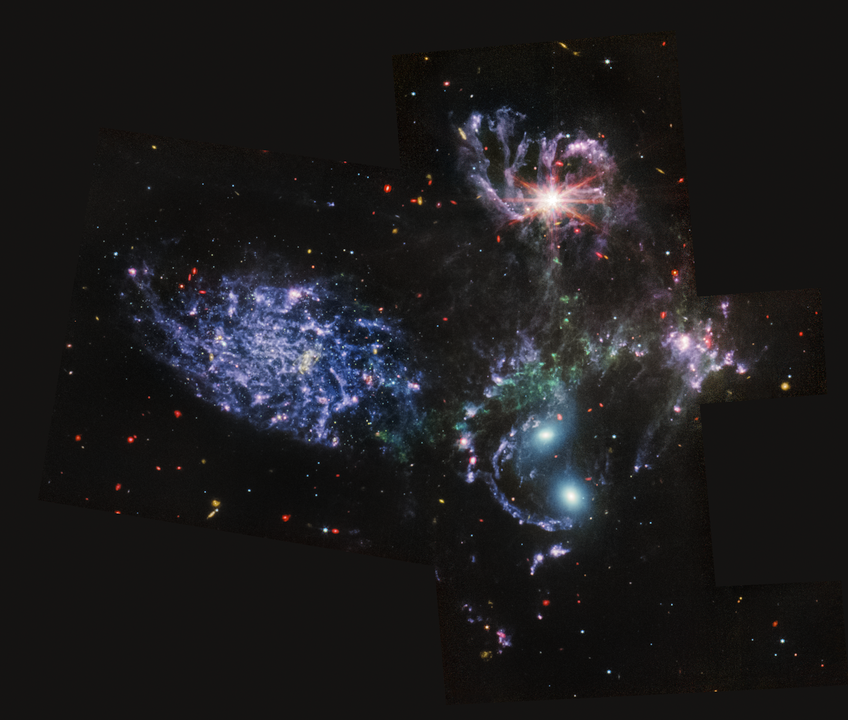
With its powerful, mid-infrared vision, the Mid-Infrared Instrument (MIRI) shows never-before-seen details of Stephan's Quintet, a visual grouping of five galaxies. MIRI pierced through dust-enshrouded regions to reveal huge shock waves and tidal tails, gas and stars stripped from the outer regions of the galaxies by interactions. It also unveiled hidden areas of star formation. The new information from MIRI provides invaluable insights into how galactic interactions may have driven galaxy evolution in the early universe.
This image contains one more MIRI filter than was used in the NIRCam-MIRI composite picture. The image processing specialists at the Space Telescope Science Institute in Baltimore opted to use all three MIRI filters and the colors red, green and blue to most clearly differentiate the galaxy features from each other and the shock waves between the galaxies.

